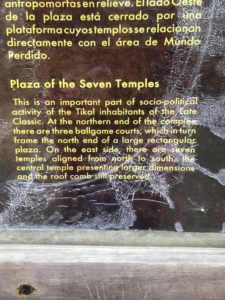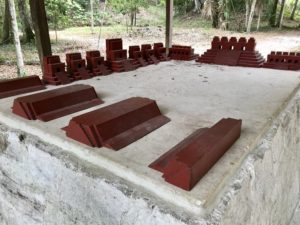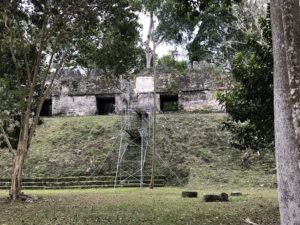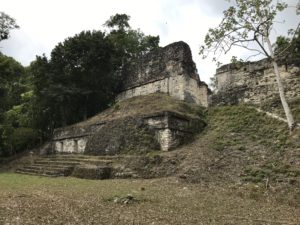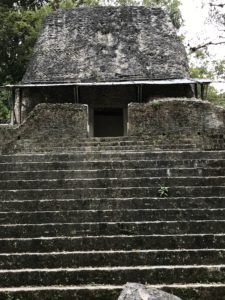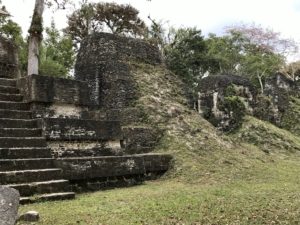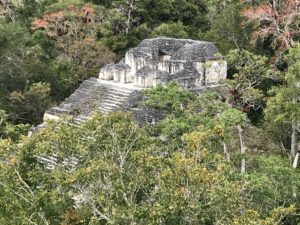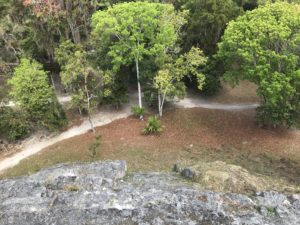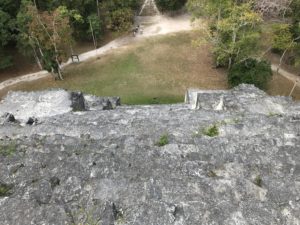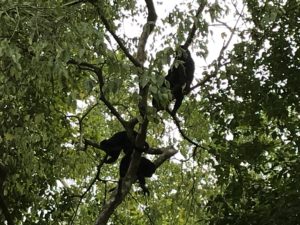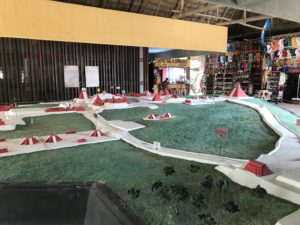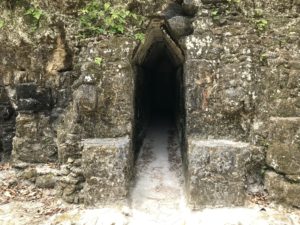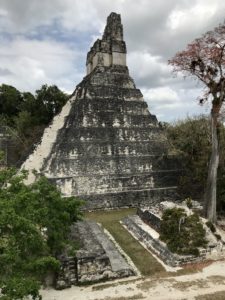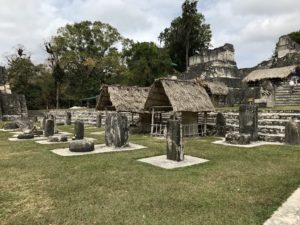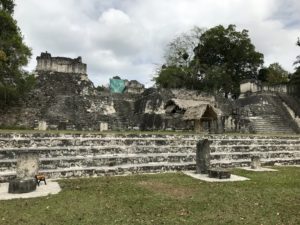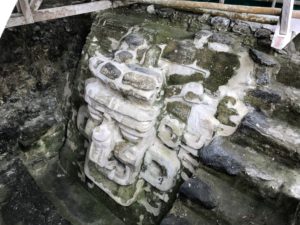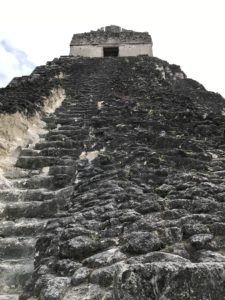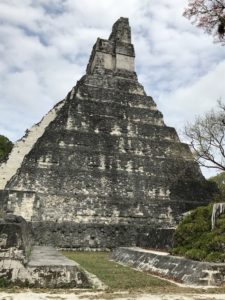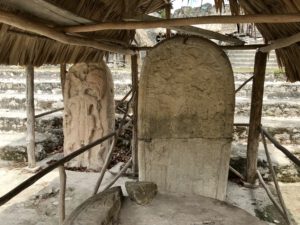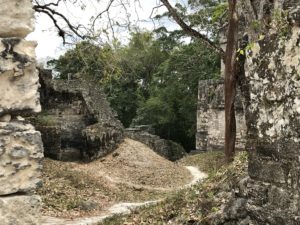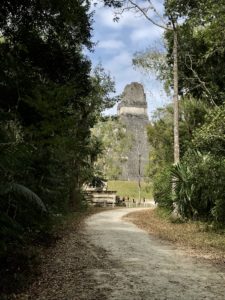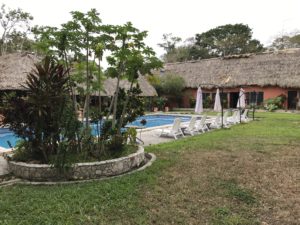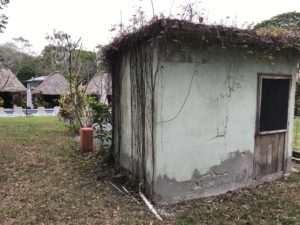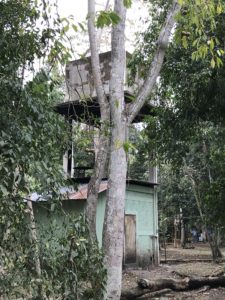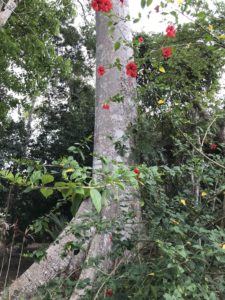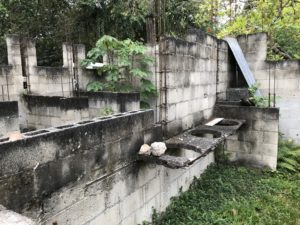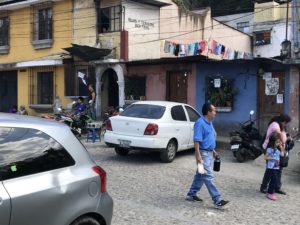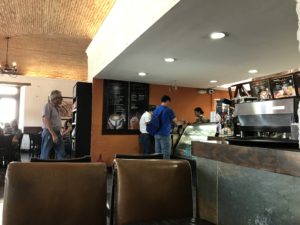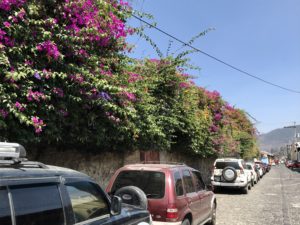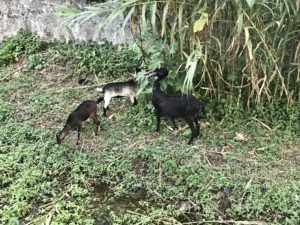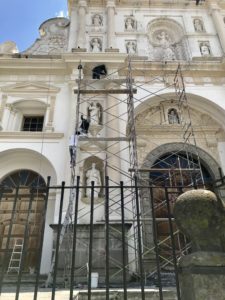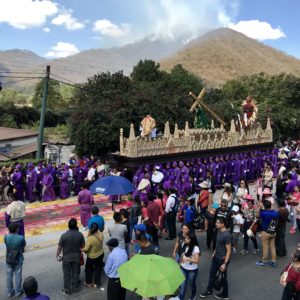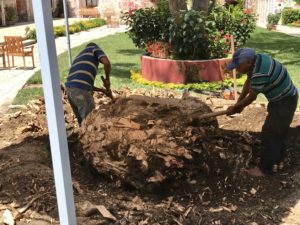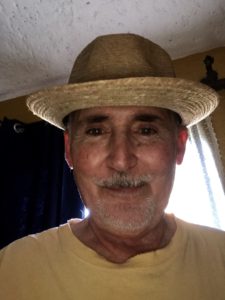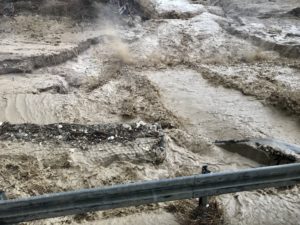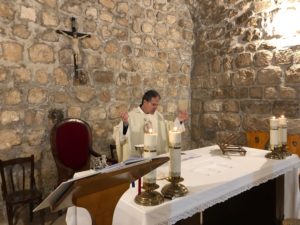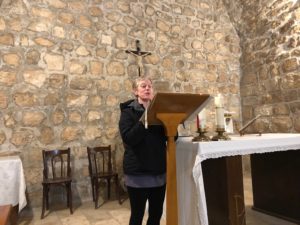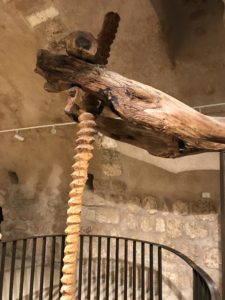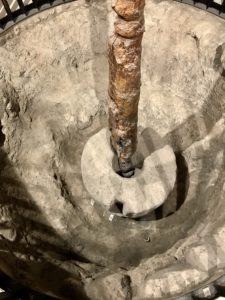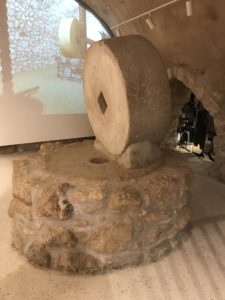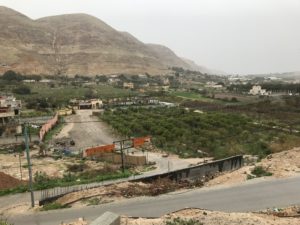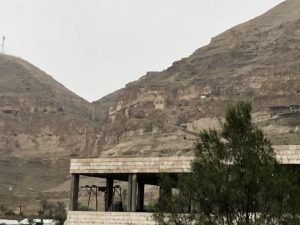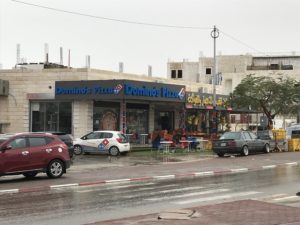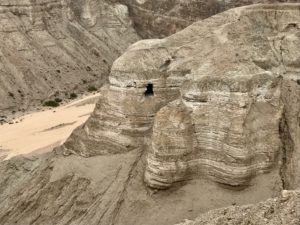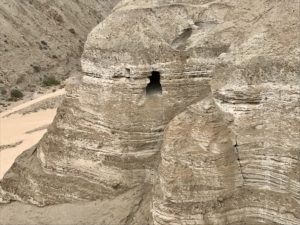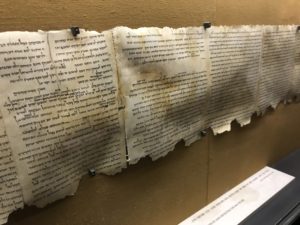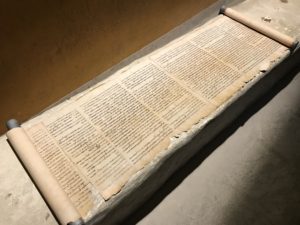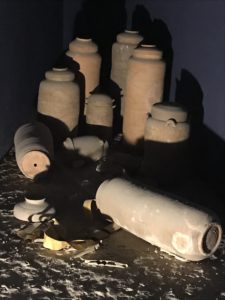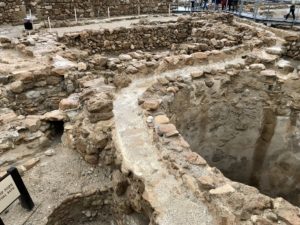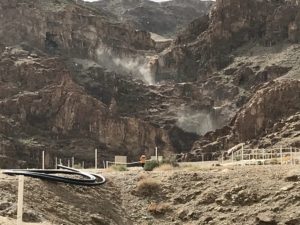It’s called the Sunrise Tour and it was the reason I rolled out of bed at 3:30 AM for the second morning in a row. My companions for this walk in the park in the dark were Andres, our Tour Guide, and Surya, a young woman from Vancouver, BC.
My first glimpse of Surya was the previous day as she was piling into the van at the airport that would take us to the Tikal Inn. She had on a cap from an animal rights organization which on the front declared, Animals are animals, not food. On the back of the cap was stitched, I don’t eat animals. We didn’t speak. She just curled up on one of the seats and went to sleep. The next time I saw her was when we were waiting in the darkened lobby for our guide to come. This post isn’t really intended to be about Surya, but the truth is she proved to be an interesting part of this little sojourn. As we were exchanging chit chat in the lobby she told me she made her living teaching breathing, so there ya go. 🙂 I didn’t ask if there was a University of Breathing in Vancouver.
Andres, our tour guide, was also an interesting character. He speaks four languages, two of which are Mayan Dialects. His English was not great, but it was better than my Spanish, and good enough so he could work as a tour guide in the park for people who speak English and Canadian.
So off we went in the dark. Full disclosure, both Andres and Surya had small flashlights, so we weren’t walking along in complete darkness. Even so, when you’re in the dark, senses are on full alert. Andres continually scanned the jungle with his flashlight looking for eyes. I walked along in silence listening to Surya query Andres about the history of UFOs at Tikal and what the Mayans believed about astrology. Told ya. Even in the dark I could tell Andres didn’t quite know what to make of young Surya.
We made our way straight to the Grand Plaza where there were a few other small groups of people that were there for the same reason as us. Andres had a laser pointer which was cool ’cause he was able to point at the exact things he was telling us about. He was truly a wealth of information about the temples, the acropolis structures, Mayan history, tombs, human sacrifice, masks, mass grave discoveries, wild life, you name it. I was really impressed with Andres. Surya wanted to know why he raised chickens just to eat them. I don’t mean to sound as critical as I know I do, because Surya really was a very likable young woman. While we were learning all about Tikal I was completely entertained by her presence.
Ultimately our goal was to make it to, and up on to, Temple 4 to watch the sunrise. As it turned out we didn’t get to see a peeking sun sunrise because it was cloudy and foggy. But it didn’t matter. It was well worth the trip anyway. This seems like a good place to insert a note about access. The physical access that the public has to the ruins is surprising to me. But great from purely a selfish standpoint. But human nature being what it is, it’s also concerning. By comparison, over at Tuluum in the Yucatan, people are confined strictly to walking paths with no actual touch access to the ruins. That said, at Tikal, you can’t just climb up on the temples. The temples where access is granted to upper levels is accomplished by staircase. Temple 4, our perch for the sunrise, has a staircase of I’d say a couple of hundred steps, that meanders back and forth up the side. Eventually you can walk out onto the front of the temple. To your left, steps rising toward the top of the temple. To your right, a serious fall that would give you the honor of bouncing down the side of a temple.
There were twenty or so other people, spread out on different steps, barely visible in the dark. It was about thirty minutes to sunrise. To my great delight it was completely silent save for the sounds of nature. I didn’t hear so much as a whisper the entire time we were up there. Here is my first camera shot as the light gradually came up.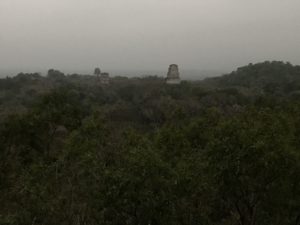
The closest temple in all of these shots is Temple 3. Going back and to the left are Temples 1 and 2. They face each other on the Grand Plaza, Temple 1 otherwise known as the Temple of the Grand Jaguar.

Here are two more shots that are zoomed and, as you can see, gradually getting lighter. Even without the sun it was a spectacular experience. 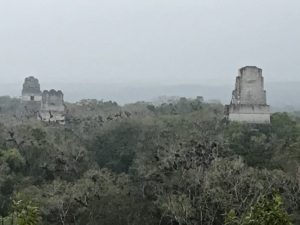
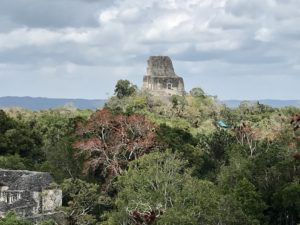
This photo I took later on in the day, from up on Temple 9, to show you where I was in the morning. It is zoomed all the way ’cause I was hoping you could see the little tiny people up there. They are just above where the color of the temple transitions from light to darker. In reality this temple is more than a half a mile away from where I’m standing.
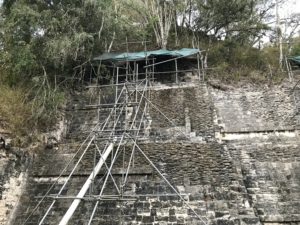
Later, when we came down, Andres took us around the front of the temple to an area that was closed off. This is still well above the actual base of the temple and shows some restoration and preservation work. In the previous photo you can just see that little spec of tarp in the lower right. Below is the “entrance” to a tunnel that is being excavated. It goes in and then up into the temple. About sixty meters have been excavated so far.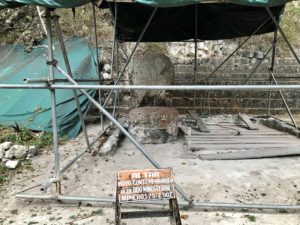
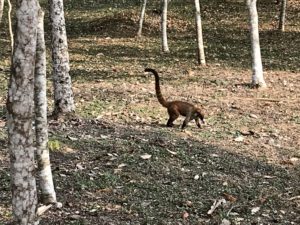
As we were walking back to the hotel, right near the checkpoint, I managed to catch this little guy scurrying around. This is a Coatimundis, (co tees, for short), a member of the raccoon family. They are fast, very shy, and don’t seem to be near as ill tempered as the raccoons we know.
Okay, below I’ve inserted the links to four videos. I have no idea if any of you will be able to view them. I took them with my iPhone and can view them on my Mac seamlessly. I’m almost positive that won’t be universally true. I sent one of the videos to my kids using Message. Three of them have iPhones and could view it easily. My son-in-law Adam, who normally is a pretty smart guy, has an Android phone. An Android phone. He told me he could hear the audio but not view the video, so I don’t know. An Android phone. I kid of course. I have a great son-in-law but, ……………., an Android phone. 🙂 I can tell you if it helps that the files are .mov and in mp4 format. If you point at the link and an extended link pops out, click on that. If it opens to a video screen but there’s just a tiny image in the center, click on that. Good luck to us all.
I’m obviously a complete newbie in using the video capabilities of my phone. I panned the same area four different times just trying to learn about the light and the effects of zooming on the results. To me the best thing about them is they give the sense of how peaceful it was. By the way, I could hear a howler way off in the distance but it didn’t pick up on the audio.
IMG_1172
IMG_1173
IMG_1176
IMG_1178
Oh, and BTW 2, I am well and hope you all are too. Thanks for being out there.
